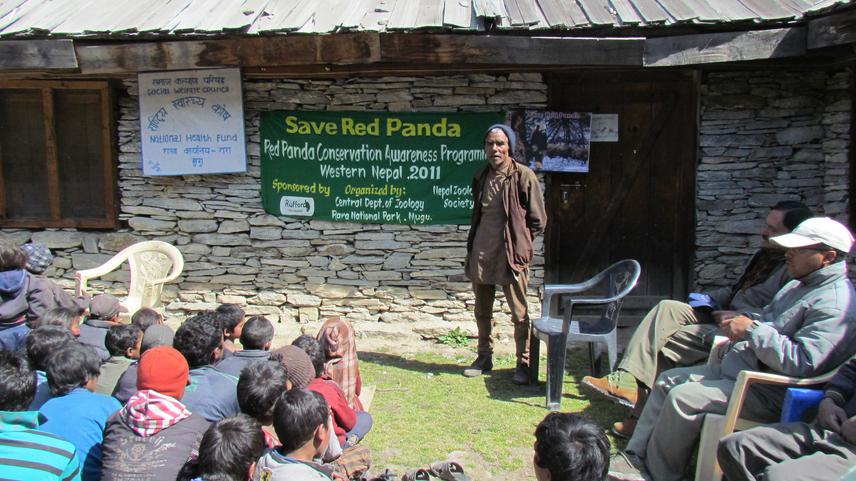Hari Prasad Sharma
Other projects
16 Jan 2014
Conservation of Red Pandas in Nepal: Characterizing Disease, Livestock Mitigation, and Public Education
10 Sep 2015
Red Panda Conservation in Nepal: Integrating Human Knowledge and Scientific Evidence to Assess Wildlife Population Health
The project aims to explore the existing habitat of Red Panda (Ailurus fulgens) in Khaptad National Park, Nepal and also diet analysis of this species to identify the level of dependency on bamboo species in this area. It intends to establish red panda eco-clubs for the conservation and conservation awareness activities at local and national levels.

Awareness programme, adressing local people
Red Panda, Ailurus fulgens fulgens inhabits the bamboo–dominated temperate forests of Nepal, India, Bhutan, Myanmar and China. In Nepal, A.f. fulgens has patchy distribution in temperate and sub-alpine area with separate population from the altitudinal range of 2,500 m- 4,000 m. Red Pandas have been confirmed in eight protected areas of Nepal which include Khangchenjunga Conservation Area, Manaslu Conservation Area, Makalu Barun National Park, Sagarmatha National Park, Langtang National Park, Annapurna Conservation Area, Dhorpatan Hunting Reserve and Rara National Park.This covers about 38 percent of the total potential red panda habitat in the country. Apart from these areas, many potential habitats are still unexplored.
Red Panda is a vulnerable species that is fully protected under the government law of Nepal and IUCN. Due to the increasing land use change, forest fragmentation and anthropogenic impact, Red pandas are facing pressure for survival. Red Panda is enlisted on the IUCN Red data list of vulnerable species in 2009 and in Appendix I as a protected animal, which is subjected to the international trade restrictions under CITES. This definition urges people to carry out further research, monitoring and conservation work so that the results are beneficial for the conservation of the species.
Intentionally as well as accidently, herders and few local people involve in illegal trade, killing, habitat destruction and disturbances in red panda habitats. This animal is quite shy and it does not escape from and rests in the trees after threatening by human beings. Due to this behavior it is likely to be killed.
This study will be the first of its kind in Khaptad National Park. The current study will generate information on the status of red panda in this area. The exploration of red panda in this area will be the baseline data for population estimation, formation of red panda conservation action plan for local and national levels in the country in the days to come. Other findings such as the habitat utilization and threats will help to develop practical conservation measures. It also aims at producing education materials and disseminating knowledge through interactions and help promote tourism in the area.